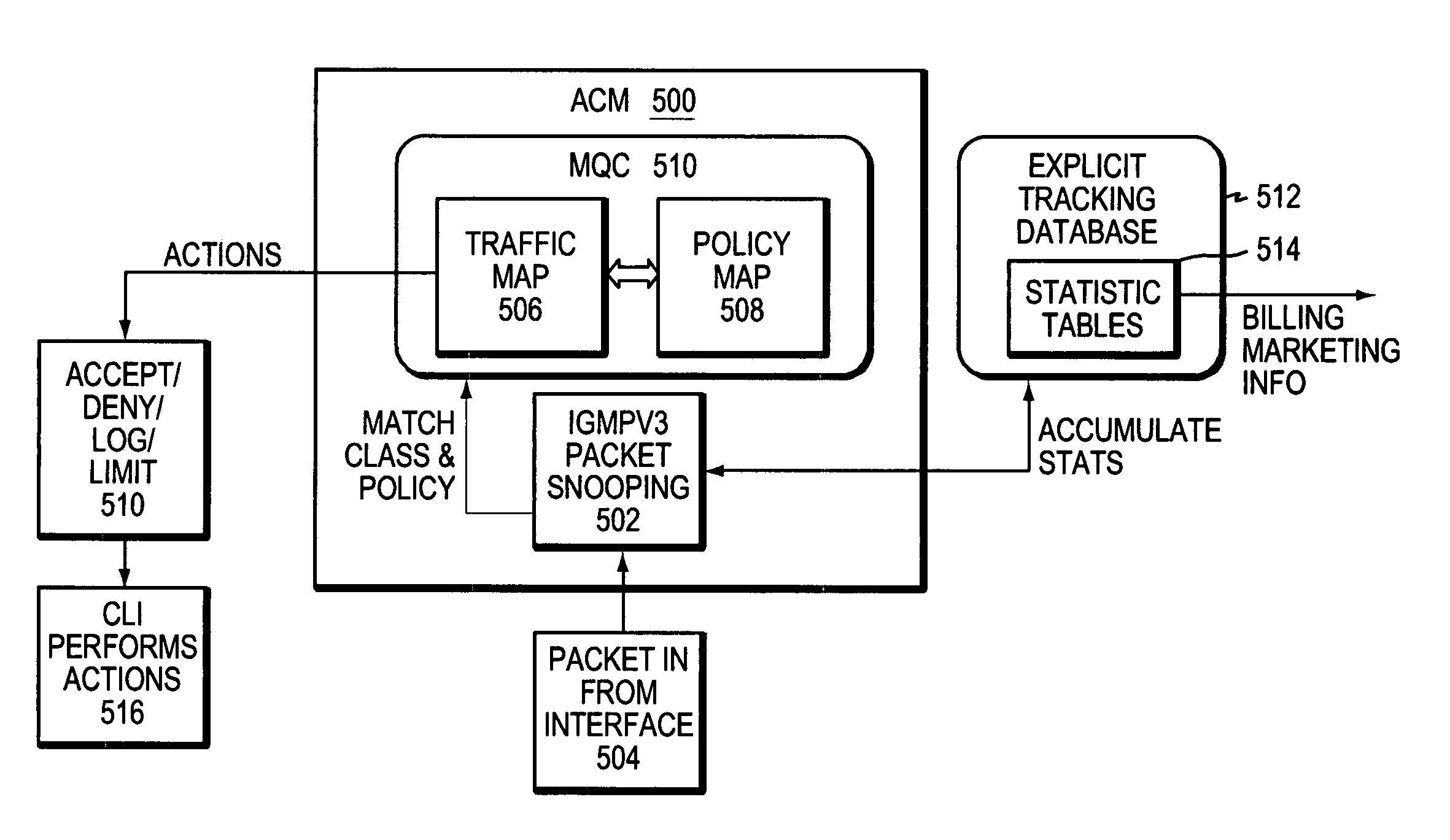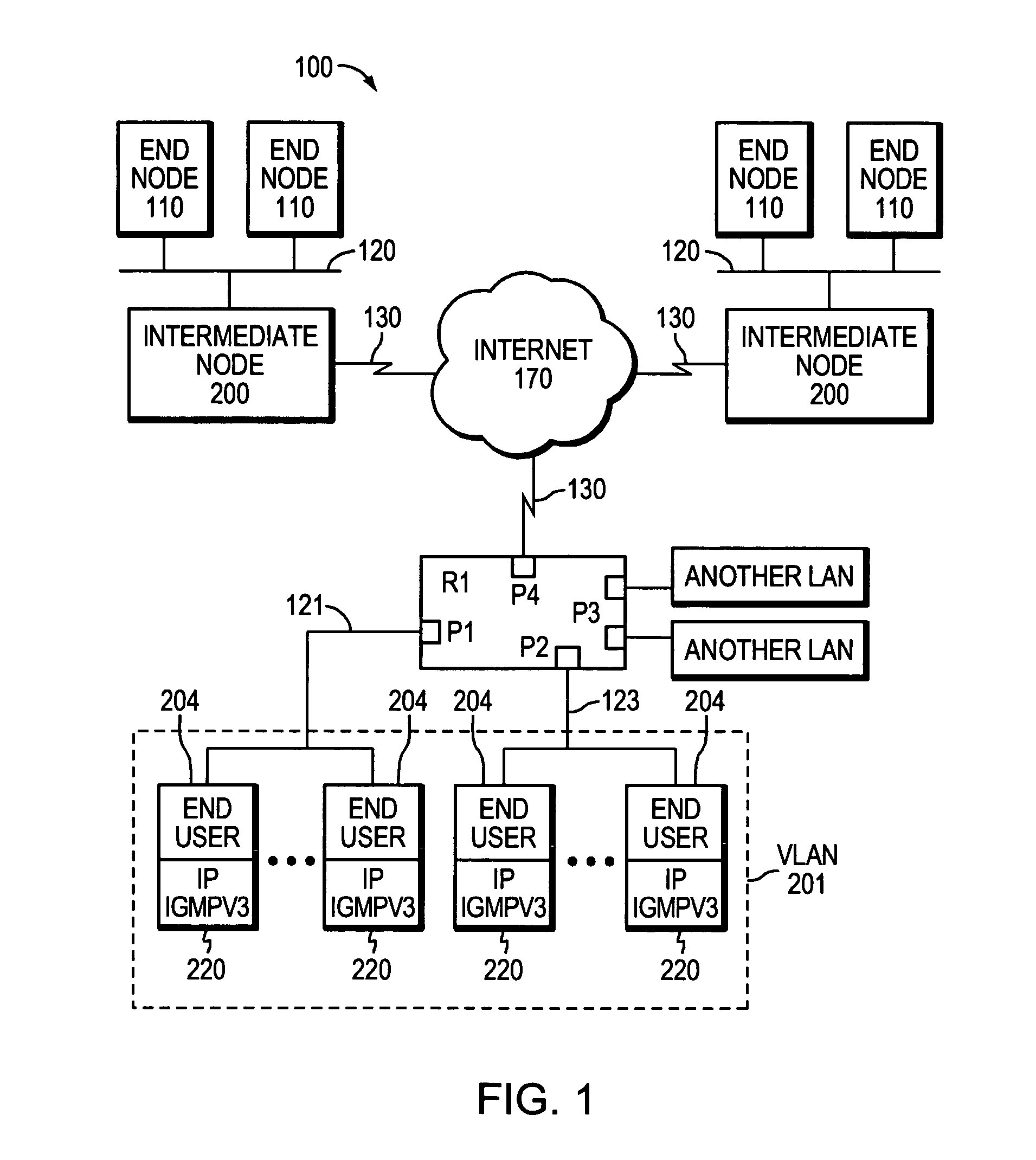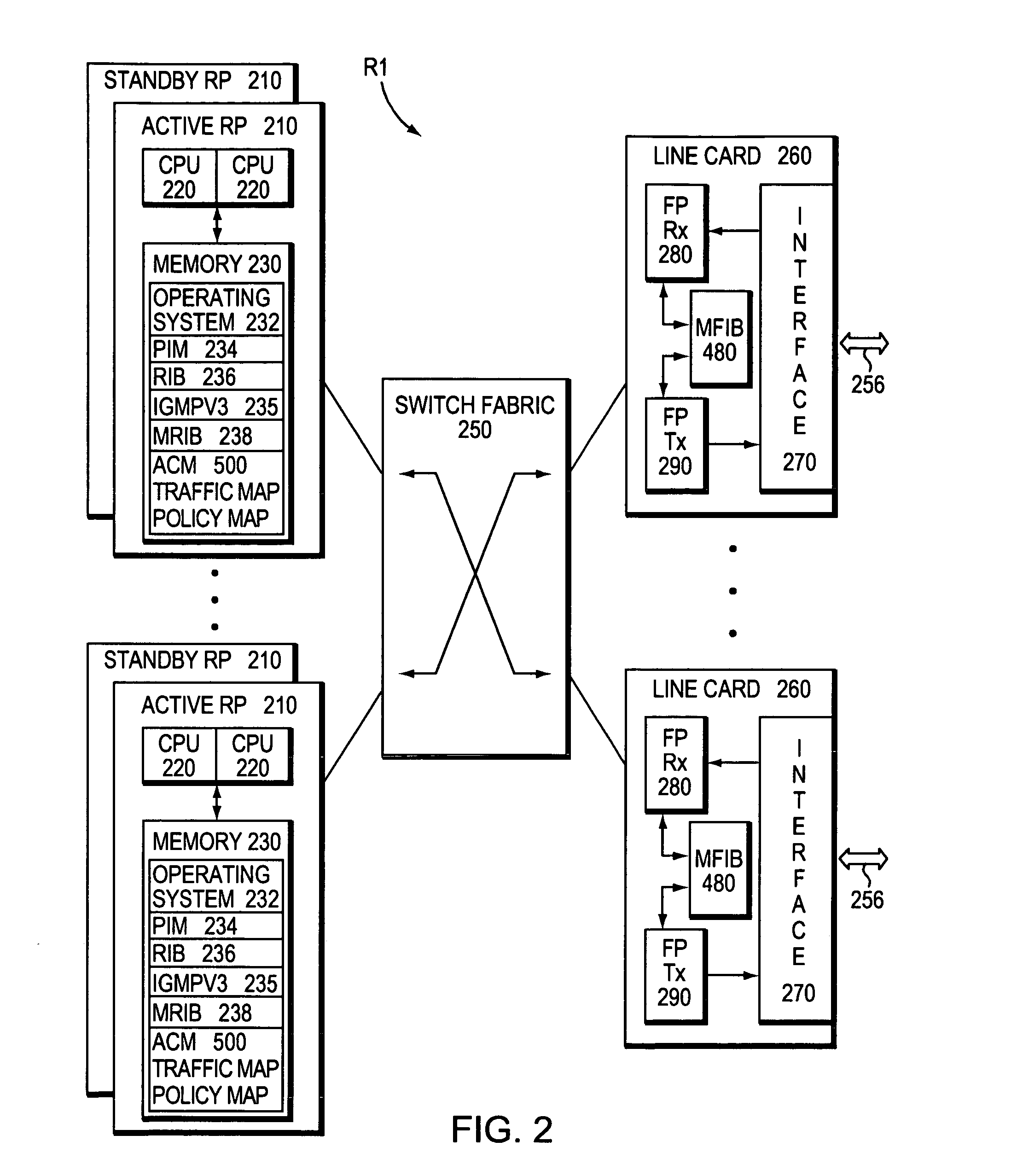Admission control mechanism for multicast receivers
a multicast receiver and control mechanism technology, applied in the field of computer networks, can solve the problems of limiting the multicast routing state created by acm
- Summary
- Abstract
- Description
- Claims
- Application Information
AI Technical Summary
Benefits of technology
Problems solved by technology
Method used
Image
Examples
Embodiment Construction
[0036]FIG. 1 is a schematic block diagram of a computer network 100 that can advantageously incorporate an embodiment of the present invention. The computer network 100 comprises a collection of communication links, segments and sub-networks connected to a plurality of nodes, such as end nodes 110 and intermediate network nodes 200. The links, segments and sub-networks may comprise local area networks (LAN's) 120, virtual LAN's (VLAN's) 201, wide area networks (WAN's) such as Internet 170 and WAN links 130 interconnected by intermediate nodes 200, such as network switches or routers, to form a network of computer nodes. A sub-network is shown of edge router R1 having two ports, P1 and P2, connected to LAN's 121 and 123, respectively. However, those two LAN's may also be part of a VLAN connecting end users 204. Another port P3 may connect to another LAN.
[0037] For video multicast, LAN's are, typically, Ethernet-to-the-home (ETTH) networks. But in other instances Token ring or other ...
PUM
 Login to View More
Login to View More Abstract
Description
Claims
Application Information
 Login to View More
Login to View More - R&D
- Intellectual Property
- Life Sciences
- Materials
- Tech Scout
- Unparalleled Data Quality
- Higher Quality Content
- 60% Fewer Hallucinations
Browse by: Latest US Patents, China's latest patents, Technical Efficacy Thesaurus, Application Domain, Technology Topic, Popular Technical Reports.
© 2025 PatSnap. All rights reserved.Legal|Privacy policy|Modern Slavery Act Transparency Statement|Sitemap|About US| Contact US: help@patsnap.com



